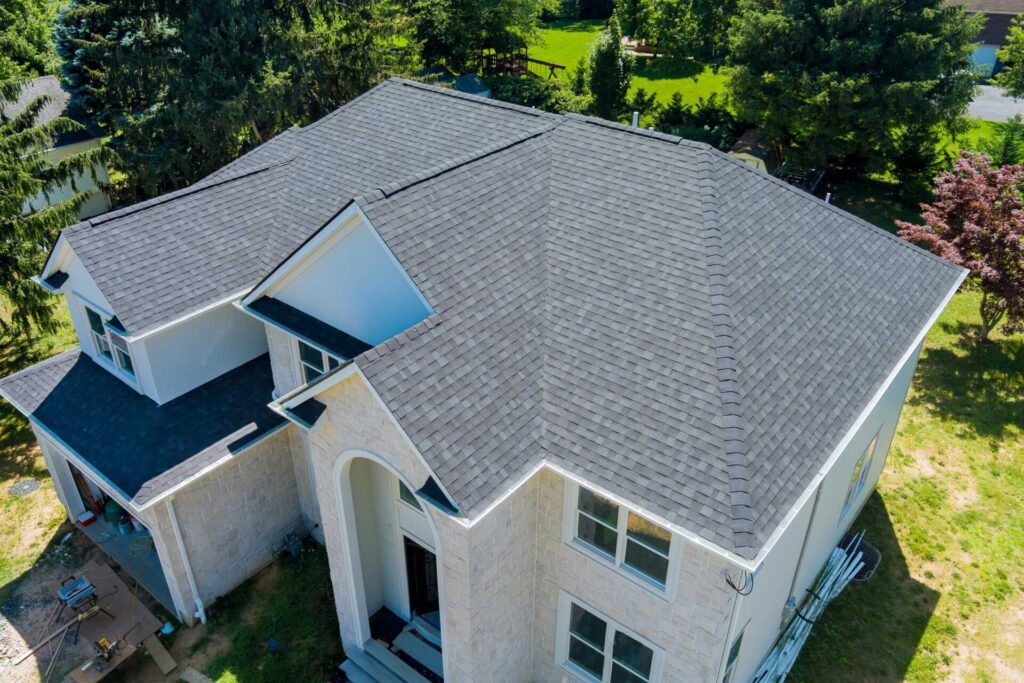When it comes to installing quality TPO membrane roofing, ensuring a flawless surface and precise membrane placement are just the beginning. The key to a successful installation lies in the meticulous attention to detail and adherence to best practices at every step of the process. From secure seams to high-quality adhesives, each aspect plays an essential role in the longevity and performance of your roofing system. Stay tuned to discover how these top tips can elevate your TPO membrane installation to the next level.
Key Takeaways
- Thoroughly inspect surfaces before installation to prevent issues.
- Use high-quality adhesives and proper seam techniques for durability.
- Ensure correct TPO membrane placement to avoid wrinkles and ensure longevity.
- Conduct regular roof inspections to detect and address problems promptly.
- Properly insulate to enhance energy efficiency and prolong the roof’s lifespan.
Proper Surface Preparation
Before installing a quality TPO membrane roofing system, it’s essential to make sure proper surface preparation. This involves conducting a comprehensive surface inspection to identify any existing issues that may impact the membrane’s performance. Begin by checking for any signs of damage, such as cracks, blisters, or uneven surfaces. Addressing these issues before installation can prevent future problems and prolong the lifespan of your roofing system.
After the surface inspection, the next vital step is proper cleaning. Cleaning the surface guarantees that the TPO membrane will adhere correctly and remain secure over time. Start by removing any debris, dirt, or loose particles from the surface. This can be done using a broom or a vacuum cleaner.
Next, wash the surface with a mild detergent and water solution to eliminate any stubborn stains or contaminants. Rinse thoroughly to make sure no residue is left behind.
Proper cleaning is crucial for promoting adhesion between the TPO membrane and the substrate. Any dirt or debris left on the surface can compromise the bond and lead to issues down the line. By taking the time to clean the surface thoroughly, you’re setting the stage for a successful TPO membrane installation that will protect your building for years to come.
Correct TPO Membrane Placement
When placing TPO membrane roofing, it’s important to guarantee proper alignment for a seamless installation. This involves meticulously aligning the membrane to avoid any wrinkles or bubbles, which can lead to future issues.
Additionally, guaranteeing a flat surface beneath the membrane is essential for a long-lasting and effective roofing system.
Proper Membrane Alignment
How can you ensure proper membrane alignment when installing TPO roofing? Proper membrane alignment is essential for ensuring seam integrity and weather resistance in your TPO roofing system. To achieve this, start by carefully measuring and marking the roof surface to guide the placement of the membrane.
Prioritize aligning the TPO membrane along the seams to prevent any misalignment issues that could compromise the roof’s overall integrity.
During installation, pay close attention to the alignment of each membrane sheet, ensuring they’re properly overlapped and secured. Properly aligning the membrane will enhance its weather resistance capabilities, as any misalignment could create openings for water infiltration and compromise the roof’s performance in harsh weather conditions.
Ensuring Flat Surface
To guarantee a flat surface for accurate TPO membrane placement, meticulous attention to the roof substrate’s condition is essential. Proper surface leveling and flatness verification are key steps in securing the longevity and effectiveness of your TPO roofing system. Here are three key tips to help you achieve a flat surface for your TPO membrane installation:
Inspect the Substrate: Before placing the TPO membrane, thoroughly examine the roof substrate for any irregularities, bumps, or depressions. Addressing any issues at this stage will prevent future problems and ensure a smooth surface for membrane application.
Utilize Leveling Techniques: Employ leveling techniques such as self-leveling underlayment or specialized tools to rectify any uneven areas on the roof substrate. Achieving a level surface is crucial for proper TPO membrane adhesion and overall roof performance.
Verify Flatness: After leveling, confirm the flatness of the substrate using a straight edge or laser level. This step will validate that the surface is uniform and ready for TPO membrane installation.
Ensuring Secure Seams
Maintaining secure seams in TPO membrane roofing is crucial for preserving the integrity and longevity of the roof system. Seam strength is vital in preventing leaks and securing a watertight barrier. Here are some key tips to guarantee your TPO membrane roofing seams are secure:
| Tip | Description | Importance |
|---|---|---|
| Proper Welding Technique | Utilize hot-air welding for strong, durable seams. | Secures seam strength |
| Seam Overlap | Guarantee proper overlap to prevent water ingress. | Essential for leak prevention |
| Quality Seam Tape | Use high-grade seam tape for added reinforcement. | Improves seam strength |
| Inspection | Regularly inspect seams for any signs of damage. | Early detection of issues |
| Professional Installation | Hire experienced roofers for precise seam work. | Secures secure seams |
Use of High-Quality Adhesives
When it comes to securing the durability and longevity of a TPO membrane roofing system, the use of high-grade adhesives plays a vital role. Proper adhesive selection and application are essential for a successful roofing installation. Here are some key considerations to keep in mind:
Adhesive Compatibility and Temperature: Make sure that the adhesive you choose is suitable for TPO membranes. Different adhesives have varying temperature requirements for application. It’s essential to follow the manufacturer’s guidelines regarding temperature conditions during the application process to achieve peak bonding strength.
Adhesive Coverage and Application: Adequate coverage of adhesive is crucial to establish a strong bond between the TPO membrane and the substrate. Ensure to apply the adhesive evenly and consistently across the surface.
Take care to apply the correct amount of adhesive as per manufacturer recommendations to avoid under or over-application, which can compromise the integrity of the roofing system.
- Quality Control: Regularly inspect the adhesive application process to ensure uniform coverage and adherence to temperature guidelines. Quality control measures during the adhesive application phase can prevent issues such as poor bonding, membrane slippage, or premature failure of the roofing system.
Importance of Proper Insulation
Proper insulation is a critical component of a TPO membrane roofing system, essential for maintaining energy efficiency and structural integrity. Insulation benefits your building by reducing heat transfer, keeping your interior spaces cooler in summer and warmer in winter. This enhances comfort and also lowers energy costs by reducing the workload on your heating and cooling systems.
Energy efficiency is a key focus in modern construction, and proper insulation plays a significant role in achieving this goal. By preventing air leakage and heat loss, insulation helps your building maintain a stable temperature, reducing the need for constant adjustments by climate control systems. This results in lower energy consumption and decreased utility bills over time.
Additionally, adequate insulation can prolong the lifespan of your TPO membrane roof by minimizing temperature fluctuations that can lead to material degradation.
Regular Maintenance Checks
When it comes to maintaining the quality of your TPO membrane roofing, regular maintenance checks are vital.
Inspecting your roof frequently and thoroughly is necessary to catch any issues early on.
Inspection Frequency and Areas
To maintain the integrity and longevity of your TPO membrane roofing system, regular examination is crucial. Proper scrutiny allows you to catch potential issues early and prevent costly damage. Here are some key areas to focus on during your examination:
Roofing Materials: Check for any signs of damage or wear on the TPO membrane, seams, flashing, and edges. Look out for punctures, tears, or areas where the membrane may be lifting.
Weather Conditions: Pay attention to how your roof is holding up against the weather. Inspect for any pooling water, which can indicate poor drainage. Also, check for signs of wind damage or debris that could have accumulated on the roof.
Penetrations: Inspect areas around any rooftop penetrations, such as vents, skylights, or HVAC units. Make sure the seals are intact and there are no signs of leaks or water damage.
Regular examinations in these areas will help you address any issues promptly and safeguard the longevity of your TPO membrane roofing system.
Importance of Upkeep
Maintaining the upkeep of your TPO membrane roofing system through regular maintenance checks is essential for maximizing its peak performance and longevity. By conducting routine inspections and addressing any issues promptly, you can benefit from increased durability and cost-effectiveness in the long run.
Upkeep Benefits:
| Benefits | Description |
|---|---|
| Extended Lifespan | Regular maintenance helps prevent premature deterioration, extending the roof’s lifespan. |
| Cost Savings | Early detection of issues through upkeep checks can save you money on major repairs. |
| Enhanced Performance | Consistent maintenance ensures top-notch performance, protecting your property effectively. |
Inspection Techniques:
Visual Inspections: Regularly check for tears, punctures, or areas of ponding water.
Seam Evaluations: Examine seams for signs of separation or damage that may lead to leaks.
Drainage Assessment: Guarantee drains are clear of debris to prevent water accumulation and potential damage.
Early Issue Detection
Regular examination of your TPO membrane roofing system is vital for early issue detection and maintenance. By conducting routine checks, you can prevent leaks and safeguard your warranty coverage remains intact.
Here are three key steps to help you effectively identify issues early:
Scheduled Inspections: Establish a regular timetable to examine your TPO membrane roofing system. Inspecting for any indications of damage, punctures, or loose seams can help you catch potential issues before they worsen.
Sealant Checks: Pay close attention to the condition of sealants around penetrations and edges. Properly maintained sealants are essential for preventing leaks and preserving the integrity of your roofing system.
Drainage Evaluation: Verify that your roof’s drainage system is free of debris and functioning correctly. Inadequate drainage can result in water pooling, which may jeopardize the effectiveness of your TPO membrane and invalidate your warranty coverage.
Compliance With Manufacturer’s Guidelines
Observing compliance with the manufacturer’s guidelines is vital when installing TPO membrane roofing. To guarantee the longevity and performance of your roofing system, it’s imperative to adhere to specific requirements set forth by the manufacturer.
Material compatibility is a key aspect highlighted in the guidelines. Make certain that all materials used in the installation, including adhesives, sealants, and flashing, are compatible with the TPO membrane. Using incompatible materials can lead to premature failure and void the manufacturer’s warranty.
Follow recommended installation techniques outlined by the manufacturer. Proper seam welding, seam cleaning, and seam preparation are crucial for the overall integrity of the TPO membrane roofing system. Failure to follow these techniques can result in leaks and reduced effectiveness of the roof.
Adhering to warranty requirements is essential. Deviating from the manufacturer’s specifications may void any warranties associated with the TPO membrane. By complying with the guidelines, you guarantee that the roofing system performs as intended and is covered under the warranty in case issues arise.
Always refer to the manufacturer’s specifications for detailed instructions on installation, maintenance, and repairs. By following these guidelines diligently, you can install a high-quality TPO membrane roofing system that provides long-lasting protection for your property.
Final Thoughts
To sum up, adhering to proper installation techniques for TPO membrane roofing is crucial for long-lasting performance. Did you realize that TPO roofing systems can last up to 20-30 years when installed correctly and well-maintained? By guaranteeing appropriate surface preparation, accurate membrane placement, secure seams, high-quality adhesives, and regular maintenance checks, you can maximize the lifespan and durability of your TPO membrane roof. Remember to always adhere to manufacturer guidelines for best outcomes.

